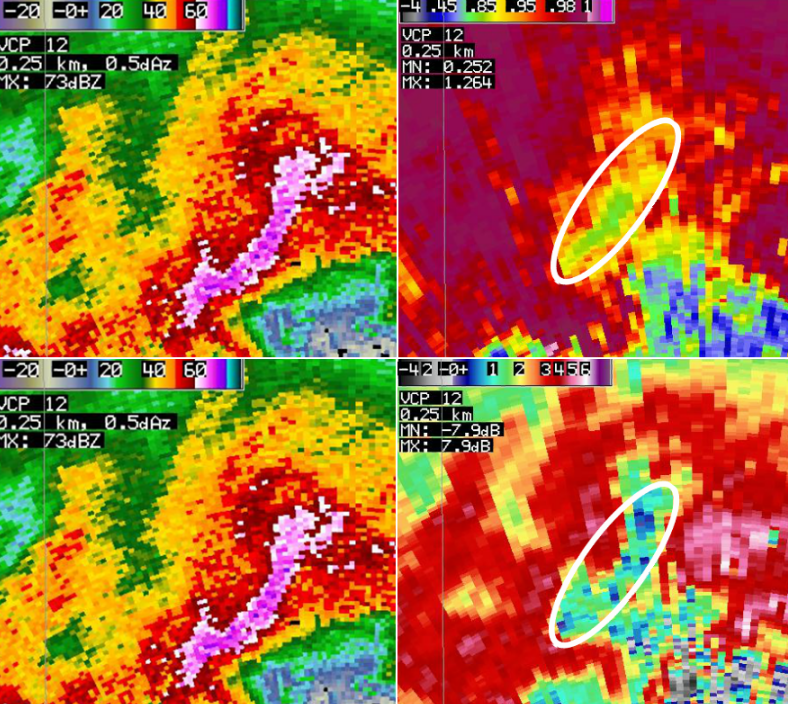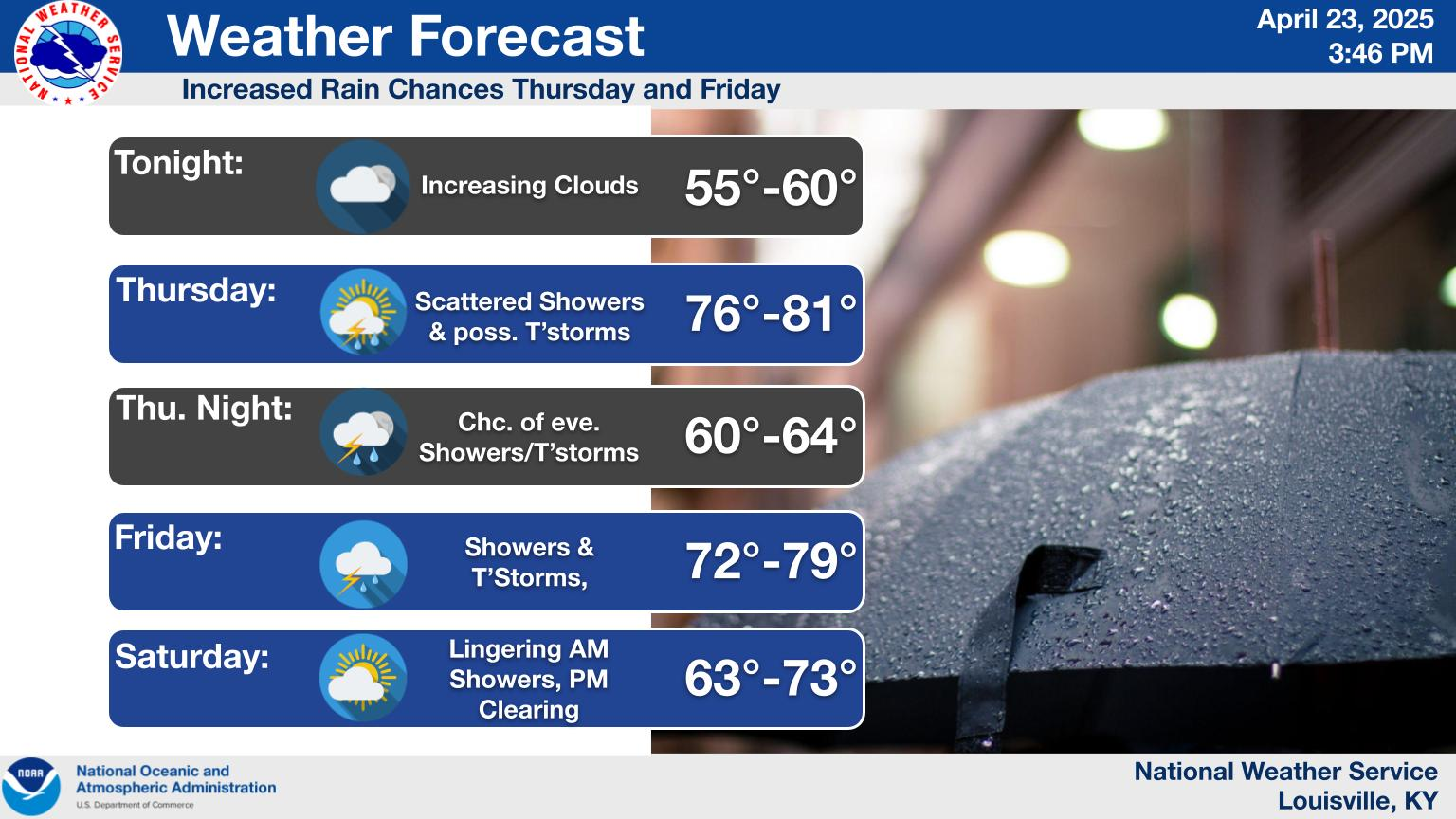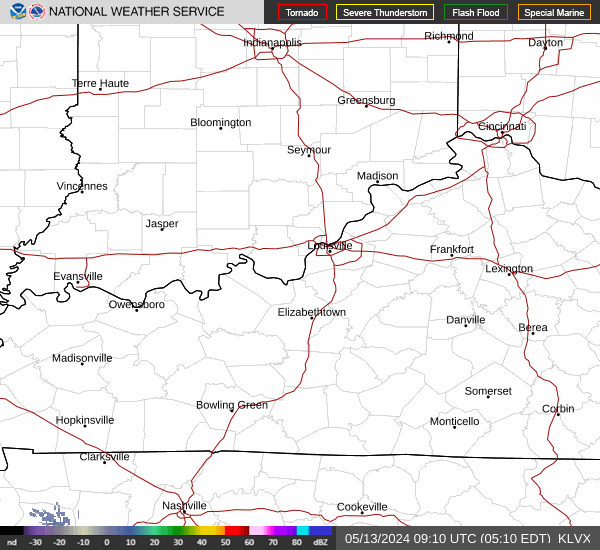Louisville, KY
Weather Forecast Office
 |
|
Conventional Doppler radar sends out a horizontal energy pulse providing a one dimensional view of precipitation. Dual pol radar sends both horizontal and vertical pulses, providing a two dimensional view. Thus, it provides much better information about the size, shape, and estimated amount of precipitation, distinguishing between rain, snow, and hail. Basic dual pol products include correlation coefficient (CC), differential reflectivity (ZDR), and specific differential phase (KDP). More information is available on our Dual Pol webpage. Above, a linear area of high reflectivity values (pink/purple) were present within a supercell (left 2 images). CC data (upper right) showed a zone of reduced values (about 0.8-0.9; green within white oval) coincident with the high reflectivity values. ZDR (lower right) showed very low values (0-1.5; blue/green within white oval) indicating spherical shapes suggestive of very large hailstones and hail mixed with rain. Surrounding red colors in ZDR indicated large rain drops which are more hamburger bun-shaped in the cloud. Dual pol clearly identified large hail in this storm which produced softball size hail just prior to the images above. Reflectivity alone (left) suggested large hail, but could not confirm it as high reflectivity values can result from a combination of precipitation sizes, types, and densities. |
Current Hazards
Hazardous Weather Outlook
Storm Prediction Center
Submit a Storm Report
Advisory/Warning Criteria
Radar
Fort Knox
Evansville
Fort Campbell
Nashville
Jackson
Wilmington
Latest Forecasts
El Nino and La Nina
Climate Prediction
Central U.S. Weather Stories
1-Stop Winter Forecast
Aviation
Spot Request
Air Quality
Fire Weather
Recreation Forecasts
1-Stop Drought
Event Ready
1-Stop Severe Forecast
Past Weather
Climate Graphs
1-Stop Climate
CoCoRaHS
Local Climate Pages
Tornado History
Past Derby/Oaks/Thunder Weather
Football Weather
Local Information
About the NWS
Forecast Discussion
Items of Interest
Spotter Training
Regional Weather Map
Decision Support Page
Text Products
Science and Technology
Outreach
LMK Warning Area
About Our Office
Station History
Hazardous Weather Outlook
Local Climate Page
Tornado Machine Plans
Weather Enterprise Resources
US Dept of Commerce
National Oceanic and Atmospheric Administration
National Weather Service
Louisville, KY
6201 Theiler Lane
Louisville, KY 40229-1476
502-969-8842
Comments? Questions? Please Contact Us.


 Weather Story
Weather Story Weather Map
Weather Map Local Radar
Local Radar